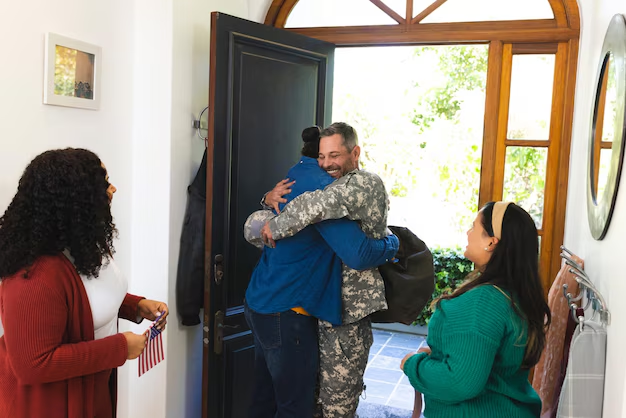Exploring the Path of Veteran Assisted Living: A Comprehensive Guide
For many veterans, navigating the transition into assisted living after years of service presents unique challenges and considerations. As these dedicated individuals reach a stage in life where extra care becomes necessary, understanding the options and resources available to them is crucial. This guide provides an in-depth exploration of veteran assisted living, offering insights into benefits, common questions, and essential tips for making informed decisions.
Understanding Veteran Assisted Living
What is Veteran Assisted Living?
Veteran assisted living refers to residential communities designed to support the daily living needs of military veterans. These facilities offer a range of services, from assistance with personal care to medical support, all within a community setting. The primary goal is to ensure that veterans receive the respect, care, and services they deserve in their senior years.
Importance of Specialized Care for Veterans
Veterans often face unique health and lifestyle challenges due to their service experiences. Such challenges may include physical injuries, post-traumatic stress disorder (PTSD), and other service-related health conditions. Specialized care in assisted living communities addresses these specific needs, helping veterans maintain their dignity and quality of life.
Exploring the Benefits of Assisted Living for Veterans
Tailored Health Services
Assisted living facilities that cater to veterans often provide customized healthcare services tailored to the unique needs of their residents. This includes access to specialists familiar with conditions common among veterans, ensuring comprehensive care is available at all times.
Social and Community Support
One of the vital aspects of assisted living is the sense of community and belonging. Veteran-specific facilities often promote camaraderie and connection through shared experiences, creating an environment where veterans can thrive emotionally and socially.
Financial Assistance Options
Many veterans may worry about the cost of assisted living. Fortunately, several financial assistance programs are available:
- VA Aid & Attendance Benefit: This program offers additional pension for veterans who require assistance with daily activities.
- State Veterans Homes: Some states provide veteran homes with subsidized living costs, reducing the financial burden on residents.
- Community-Based Services: Various non-profit organizations offer support to veterans, which can include discounts or financial aid.
Addressing Common Questions About Veteran Assisted Living
What Are the Criteria for Eligibility?
Eligibility for veteran-specific assisted living depends on several factors:
- Military Service: Generally, veterans must have served in active duty and received an honorable discharge.
- Age or Disability: Veterans should be either seniors or have disabilities resulting from their service.
- Financial Need: Some benefits are need-based, requiring veterans to demonstrate financial necessity.
How to Apply for Benefits?
Navigating the application process can be complex. Here’s a simplified breakdown:
- Gather Necessary Documentation: Have military discharge papers, financial statements, and medical records ready.
- Connect with a VA Representative: These professionals can guide veterans through the application process.
- Submit Applications Early: Due to processing times, it’s advisable to apply as soon as the need arises.
Are Families Involved in the Care Process?
Family involvement in a veteran's care is vital for emotional support and decision-making. Assisted living facilities often encourage family participation through regular updates and involvement in care planning meetings. This collaborative approach ensures that the veteran receives well-rounded support.
Factors to Consider When Choosing an Assisted Living Facility
Selecting the right assisted living facility involves evaluating several critical factors to ensure it meets both the veteran’s needs and preferences:
Location and Accessibility
- Proximity to Family: Choose a facility that allows frequent family visits.
- Access to VA Services: Consider the distance from VA hospitals or clinics for convenient healthcare access.
Quality of Care
- Staff Qualifications: Check if the facility employs trained medical professionals familiar with veterans' health issues.
- Veterans-Specific Programs: Opt for facilities offering tailored programs that focus on veterans’ mental health and social integration.
Cost and Financial Planning
- Transparent Pricing: Understand all costs involved, including any potential additional fees for specialized services.
- Financial Assistance: Utilize available benefits to reduce out-of-pocket expenses and seek facilities that accept VA benefits.
Tips for a Smooth Transition to Assisted Living
Transitioning to an assisted living facility can be emotionally and logistically challenging. Here are some practical tips to ensure a seamless transition:
- Involve the Veteran in Decisions: Engage them in choosing a facility to empower them and alleviate anxiety.
- Visit Facility in Advance: Spend time onsite to familiarize the veteran with the environment and staff.
- Prepare Necessary Legal and Medical Documents: Ensure all paperwork is in order for a smooth move.
- Pack Comfort Items: Include personal belongings that bring comfort and familiarity.
Summary: Navigating Veteran Assisted Living 🏡
Here are key takeaways to help veterans and their families make informed decisions:
- Explore Benefits: Understand and utilize VA benefits to ease financial burdens.
- Evaluate Facilities: Choose based on location, care quality, and veteran-specific services.
- Involve Family: Engage loved ones in decisions and care plans for holistic support.
- Prepare for Transition: Smooth transitions involve legal prep, visiting, and comfort items.
Making the move to assisted living involves several considerations, particularly for veterans who have unique needs stemming from their service experiences. By understanding the landscape of veteran-assisted living and using available resources, veterans and their families can ensure that their later years are spent with dignity and the quality care they deserve. By approaching the journey with careful planning and thoughtful consideration, the transition can become a rewarding step into a supportive community environment.

Related Topics
- 11 Signs It Might Be Time For Assisted Living
- 2 Bedroom Assisted Living Near Me
- 305 West End Assisted Living
- 5 Levels Of Care In Assisted Living
- a Banyan Residence Assisted Living Resort Facility
- Abernethy Laurels Assisted Living
- Activities For Seniors In Assisted Living
- Adult Assisted Living
- Advantage Assisted Living
- Aegis Moraga Assisted Living